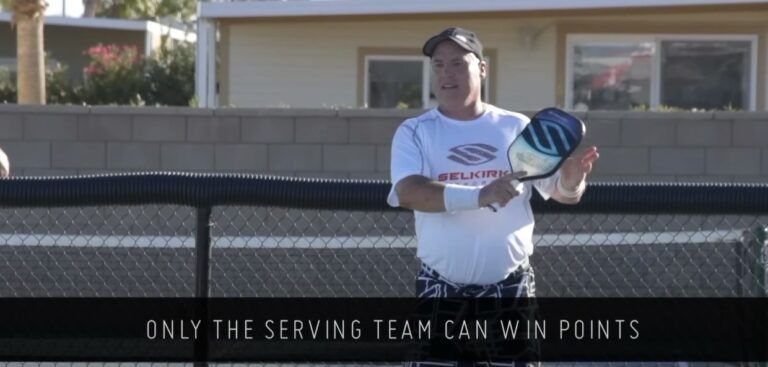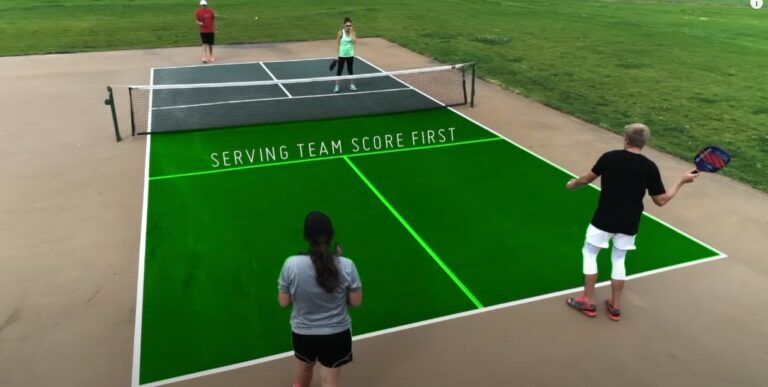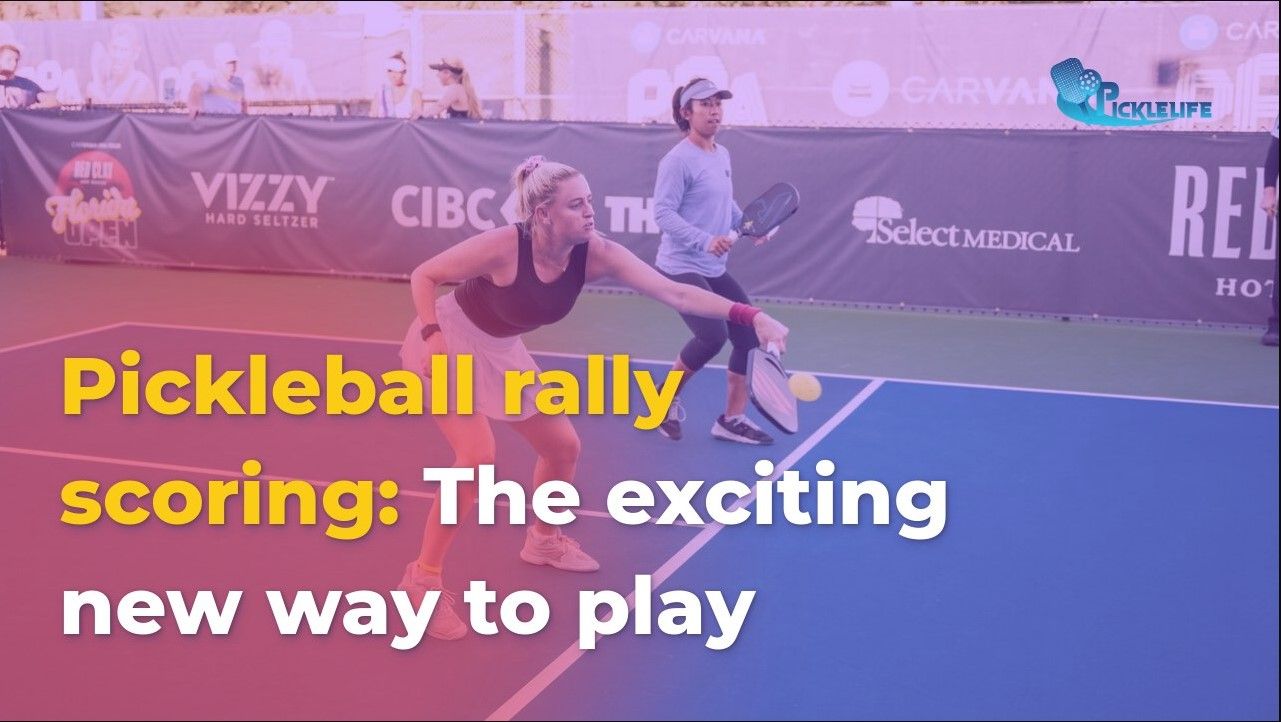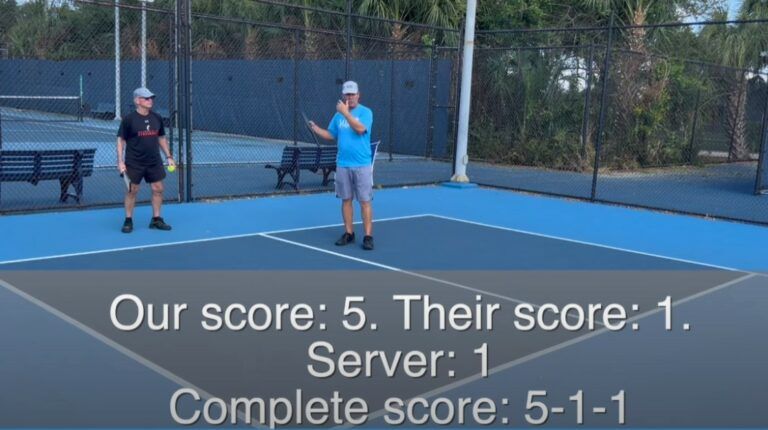The thrill of each service point, coupled with intense rallies, creates a captivating environment, making it essential to have a solid understanding of the foundational concepts in scoring. Whether a player seeks to compete at local clubs or in professional tournaments, comprehending the nuances of scoring can create a competitive edge. In this comprehensive guide, we’ll delve into the ins and outs of pickleball scoring rules, providing invaluable insights that empower players to navigate the game with confidence.
Fundamental pickleball scoring concepts
The foundation of any sport lies in its scoring system. In pickleball, points, rallies, and faults constitute the core elements that players must navigate. A point is awarded when one team fails to return the ball within the limit, making every rally critical. The exhilarating aspect of pickleball is that it incorporates rally scoring, allowing either team to earn points regardless of who served. This rule not only increases excitement but also elevates the stakes; a serve can swing the momentum of a match in a matter of seconds.

Understanding rallies is equally vital. Each rally begins with a serve and can conclude with a team either scoring a point or committing a fault, accentuating the importance of every shot played. A fault occurs when players do not hit the ball over the net, fail to serve within the correct area, or step into the non-volley zone improperly. By mastering the flow of points, rallies, and faults, players can seize scoring opportunities, significantly improving their game strategy and performance.
Another crucial component is the concept of side-out, which represents the transition of serve from one team to another. The serving team will lose their right to serve after failing to score points, thus granting their opponents the opportunity to score. This constant shift in momentum keeps the game engaging and makes each point matter even more. As players become accustomed to these rules and concepts, they’ll be better prepared to strategize effectively during their matches.
Doubles pickleball scoring
Doubles pickleball introduces an intricate scoring system that can seem daunting at first. Using a three-number score system, players identify the doubles pickleball score by calling out their team's score first, followed by their opponents’ score and the server number. The urgency of correctly announcing the score reflects the game’s fast-paced nature; a simple error can throw off the rhythm of the match. For example, if Team A has scored three points and Team B has scored one point with Player 1 serving, the correct call would be “3-1-1”.

A unique aspect of doubles play is the importance of server numbers and rotation. Each team consists of two players, and both will have the opportunity to serve when they win a rally. Teams must also be mindful of the serving order, which alternates based on who wins the point. If the serving team loses a rally, the serve transitions to their opponents, creating a cycle that emphasizes coordination and teamwork.
Positioning also plays a pivotal role in the scoring dynamics of doubles play. Players must switch sides of the court based on whether they are serving from the even court or the odd court. Positions are strategized according to their scores: an even score dictates play from the right side, while an odd score requires them to play from the left. This aspect of player positioning and side switching introduces an additional layer of strategy, allowing teams to leverage their strengths while maximizing their scoring potential.
Singles pickleball scoring
In singles pickleball, the scoring structure is streamlined yet effective, typically represented by a simplified two-number system player’s score first, followed by the receiver’s score. Unlike doubles, where the complexity of the game increases with the player count, singles is a pure contest of skill and strategy.
For example, if Player A has four points and Player B has two, the correct announcement would be “4-2”. This simplicity grants players the freedom to focus on their individual gameplay strategies rather than the complexities introduced by partner dynamics.

Serving positions in singles play add a tactical twist to the game. Players should be keenly aware of where they serve from based on their scores. The right service court is utilized when a player’s score is even, whereas the left service court comes into play when their score is odd. This regulation significantly influences the serve's angle and potential effectiveness, making even score serves advantageous for strategic placement and surprise attacks.
One of the defining characteristics of singles play is the concept of side-out, wherein players lose the rally and, consequently, their serve. Recognition of when to switch serves is crucial and requires acute attentiveness to not just one’s own score but also the opponent's. Understanding these scoring nuances in singles matches will foster adaptability in players while enhancing the competitive atmosphere inherent to pickleball.
The first serve exception
To maintain a sense of fairness and balance, the 2024 updates included a first serve exception specifically geared toward easing the advantages of powerful serves. This rule introduces a unique scenario at the start of each game where the initial team that serves does so with specific conditions. The rationale behind this is to promote fair play, ensuring that the serving team does not gain an undue advantage due to an unpredictable scoreline. This refinement aids both experienced and new players in understanding their opportunities at the beginning of each match.
When a game begins, players will refer to a designated starting score format: “0-0-2”. The second server starts if the first server commits a fault, meaning the serving duty passes to the next player on the team without transitioning into a side-out. This serves as a safeguard against a single player dominating from the outset, promoting a more equitable showdown in matches where skill reigns supreme.
The side-out rule is further reinforced after the first fault; the serving team begins again with the opponent now in control. This evolution in the rules reflects just how important it is for players to remain oriented with the scoring and serving guidelines, as misunderstanding these can easily lead to confusion, depriving teams of valuable points.
Calling the score in pickleball
Clear communication is an essential pillar of competitive sports, and calling the score accurately plays a significant role in the game of pickleball. Having a well-established method for announcing scores eliminates disputes and strengthens the overall flow of play a necessity for both recreational and tournament settings. The expectation is that players announce their score in a specific order, clearly stating the server score, receiver score, and the server number in doubles matches. For singles, the process is simplified to merely the server score followed by the receiver score.

Memorizing the correct sequence fosters better communication amongst players, and repeating this process ensures consistent practice. It’s crucial to call the score before serving, offering every player the chance to prepare for the next rally effectively. Many well-regulated tournaments reinforce this protocol, making it not just a recommendation but rather a requirement for maintaining a competitive atmosphere.
Understanding when to call the score adds an additional layer of importance. Players should announce the score when both individuals are ready to serve; this promotes an uninterrupted flow of play and emphasizes the idea of preparedness. The stakes during matches rise, mirroring the suspense of climactic film scenes where every action matters, making correct score calls even more vital for achieving victory.
Common pickleball scoring mistakes
In the excitement of playing pickleball, players can often fall prey to common errors related to scoring. This can be particularly pronounced among beginners, where the learning curve is steep. One frequently overlooked mistake is forgetting to announce the score, an issue that may seem trivial but can significantly impact game flow and clarity. Consistency is key; establishing a habit of calling the score enables a smoother gameplay experience, ensuring that all players are on the same page.
Additionally, confusion regarding the correct server number or improper player positioning can also lead to the potential pitfalls of scoring miscommunication. Players must pay close attention to the serving order as outlined by the rules and stay attuned to the even/odd court positions based on the score. Many players may unknowingly misplace themselves or call the wrong server number, leading to unnecessary misunderstandings that can impact the game.
Understanding these fundamental errors equips players with the strategy to avoid them. A helpful tip for beginners is to remember the concept of the first serve exception. Over time, keeping these potential discrepancies in check fosters a sense of assurance and preparedness, allowing players to exert their focus solely on the exhilarating aspects of gameplay rather than worrying about operational details.
Tips for remembering the score
Retaining the score in pickleball can feel just as daunting as strategizing each shot on the court. Fortunately, a combination of verbal and visual cues can enhance score recall and overall game performance. One effective method involves the regular use of verbal cues and repetition when calling the score, allowing players to engrain the information within their memory. By committing to announce the score consistently throughout gameplay, players develop a habit that improves focus and communication.
In addition to verbalization, players can benefit from visual clues based on player positions. Recognizing whether they are on the even court or odd court not only affects serve positioning but can also serve as a mental marker for recalling scores. Developing awareness of where players stand during their serving phases is instrumental in maintaining clarity about the score.
Utilizing scorekeeping tools can also provide robust support for players during matches. Whether through mobile scoring apps, manually operated scoreboards, or simple written notations, these materials can reinforce memory while also allowing teams to stay updated on match progression. Not only do these tools eliminate the risk of miscommunication, they also enhance gameplay experience by fostering a sense of organization.
Pickleball scoring in tournaments
Tournament play introduces a multi-layered approach to scoring that differs from casual or recreational games. Variations in scoring formats, such as games played to 15 or 21 points, alongside best-of-three or best-of-five matchups, enhance the competitive atmosphere, elevating the stakes for each player involved. In tournament settings, understanding specific scoring rules can be as crucial as perfecting the serve itself.
With heightened competition comes the imperative of stricter enforcement of rules. Players in tournaments have recognized the vital necessity of abiding by the outlined regulations consistently. Violation of score calls can lead to penalties or disqualification, emphasizing the importance of accuracy in announcing the score. The pressure is palpable as the nuances of clear communication and proper execution become apparent amidst the intense rivalry.
Navigating these tournament-specific regulations entails a level of diligence on the part of players. Being well-prepared means consulting rulebooks and directly communicating with tournament organizers to ensure all guidelines are understood and followed. Just as in any competitive environment, adhering to these regulations ensures not only a fair playing field but also enriches the overall spirit of the game.
Advanced pickleball scoring scenarios and strategies
Once players have comfortably adapted to the fundamental scoring rules, they can begin to explore advanced scenarios and strategies. A noteworthy example that arises in doubles play is stacking, a strategic positioning technique used to maximize scoring opportunities. By maintaining preferred court sides, players can effectively leverage rules to their advantage, enhancing their chances of success based on individual strengths and weaknesses. This tactic further personalizes gameplay, allowing teams to forge their unique dynamic on the court.
Handling wrong score calls is another vital aspect requiring players’ attention. Being prepared to address such disputes necessitates stopping play before the third shot, allowing concerns to be resolved before potentially critical points are lost. As previously mentioned, establishing clarity in communication is essential, and this theme carries through when confronting difficult situations during matches.
Finally, players must also be informed about the permitted questions to the referee to avoid misunderstandings concerning the score. Clarifying matters such as server/receiver specifics or confirming player positions can strengthen the confidence of all those involved. The key lies in recognizing the fine line between managing competitive spirit and maintaining respectful and clear communication with other players and officials.
Understanding pickleball scoring rules is a journey, not just a destination; it is a unique blend of strategy, teamwork, and personal skill development. The exhilarating game keeps players engaged and returns them to the court time and time again, hungry for both competition and personal growth. Embracing the nuanced rules of scoring enhances the experience, enabling players to revel in the essence of pickleball.










